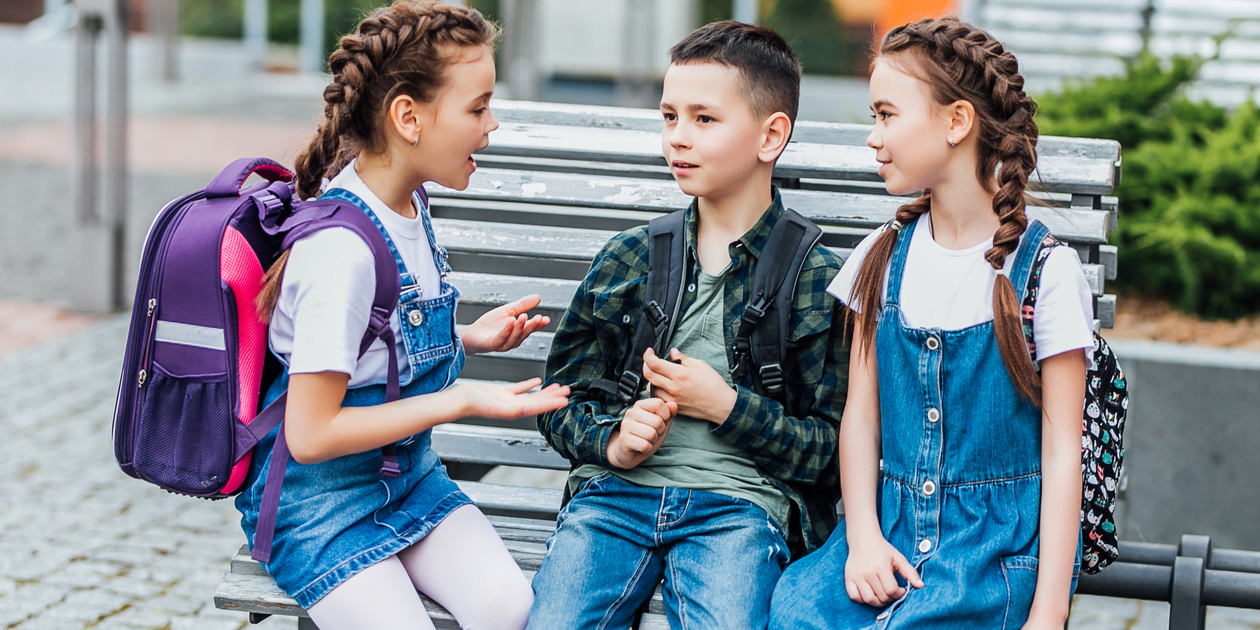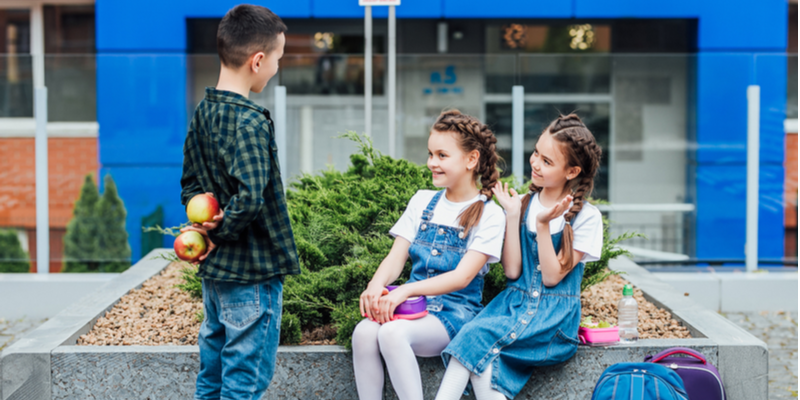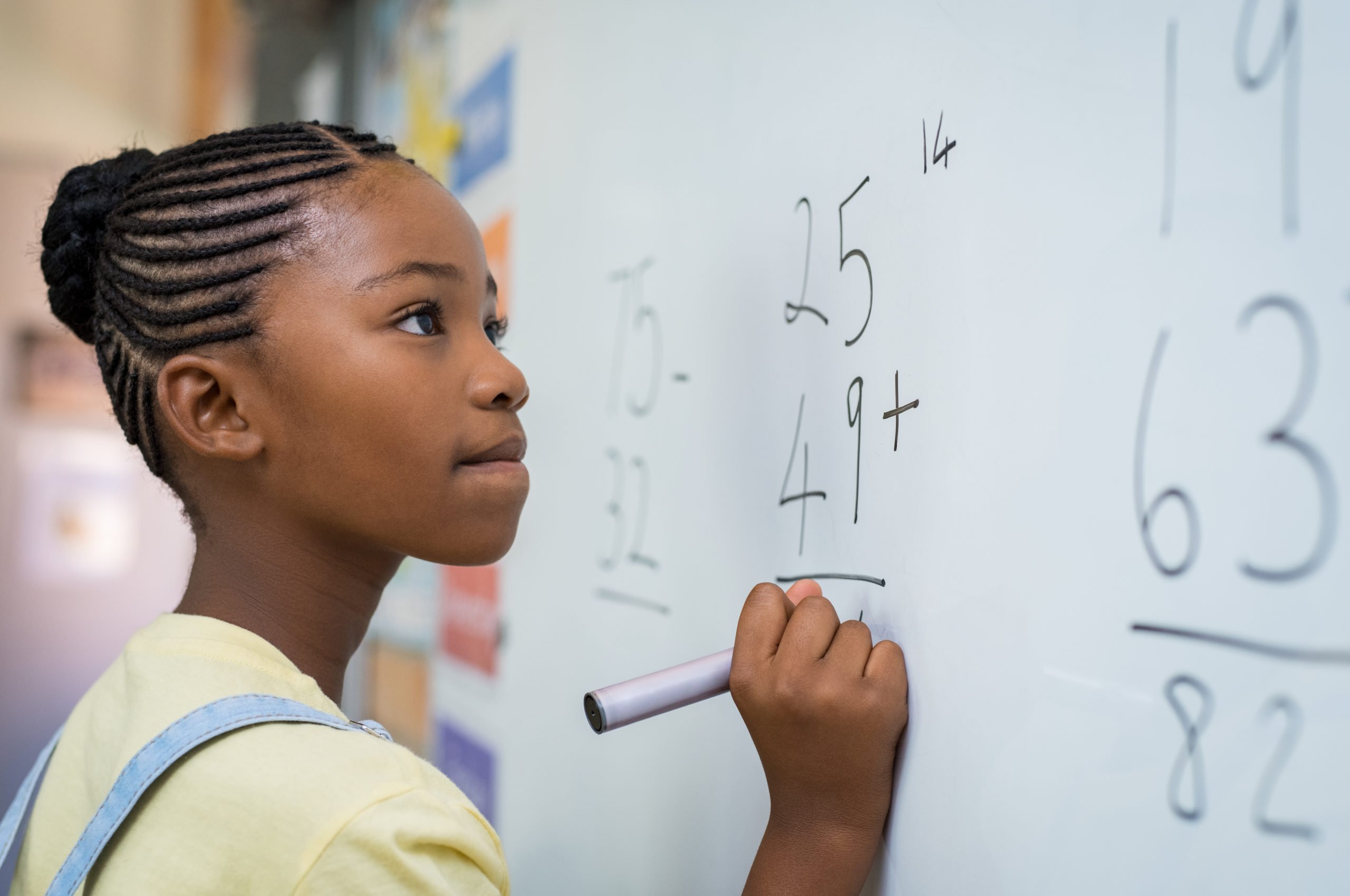Help your child have better conversations with their friends
by Martha Currie on Mar 17, 2022

Making and keeping friends is complicated. You need to be able to communicate well with them. If your child has trouble expressing themselves or understanding social cues, they might have a harder time making friends and keeping them. This article will help you understand the skills your child needs to make friends and the interaction and communication skills required to sustain them over time.
Initiating the conversation

Even now, initiating conversation with a new group of people can be daunting, there’s more than one person to connect with. Each person has a unique personality and communication style. The group itself has a unique way of functioning, based on who’s in it and what’s being discussed.
Some children find it difficult to understand body language and this can be a problem when they are trying to have conversations. It can be hard to figure out if a conversation is private or not, which can lead to mistakes. Children may also misperceive the rhythm of conversations, for example, if there is a pause does that mean it's over? Or are they just taking a break?
And some children don't understand that they need to talk about the topic that is already being discussed, not just their own interests.
Abilities involved in initiating a conversation:
- Read the body language of the group to know if it’s appropriate to join in.
- Use the right phrases to ask to be included.
- Understand the tone of voice people use when they aren’t OK with you joining.
- Know what’s being discussed, and stay on topic
How to help your child:
- YouTube videos, TV shows, and real-life can be used to show examples of when a group is turned away or when people are talking privately. You can also use these examples to show your child how to wait for a break in the conversation and then ask a question.
- Remind your child to listen and say something related to what others are saying. Your child can use “wh” questions (who, what, when, where and why) to show interest, and to discover what is being discussed.
Thinking from the other person’s point of view

This is a huge research topic and there are lots of theories and ideas about how thinking from another person's point of view or perspective-taking develops and how important it is for conversation and making friends.
In the context of making friends, perspective-taking is vital, it demonstrates to the people we are communicating with we care! It shows we are interested, empathetic, and allows us to support and help to troubleshoot the problems another person might be having.
Some children find this hard. When starting a conversation with new people, they may not say hello, and they may start talking before they know what the other person is thinking. Other children might not be able to read the atmosphere of a room, and so they won't know if it's a good time to start talking or not. And once they do start talking, they may not be able to tell if the other person is interested in continuing the conversation

Abilities involved perspective-taking:
-
Know to start with a greeting, and have the language to do that.
-
Recognise if it’s an appropriate time to have a conversation.
-
Choose an appropriate topic and have phrases to open the dialogue.
-
Recognise nonverbal cues that show if the other person is interested in talking to you.
How to help your child:
- Teach your child that there are some phrases that you can use when talking to people that you know well and others to use with people that you don't know very well. With people you know well, you can say "Hi, how are you?" With people who you don't know very well, it is better to say "Hi, I'm Isaac. I'm Emily's friend from school."
- Talk to your child about people’s body language. People have different body language when they do and don't want to talk. For example, their eyes might not look at you, or they might cross their arms which shows they are closed off.
- Show your child examples of different facial expressions. Show them what someone looks like when they are engaged and interested in what you are saying and what people might do if they are not. For instance, if someone has a neutral face or an uncomfortable face if they're probably not interested that interested in what you are saying.
Keeping the conversation going

For children who struggle with social skills, the challenge doesn’t stop once they have entered a conversation. Some children might interrupt or say something without thinking, especially when they're excited about a topic. They might also not fully understand when someone is trying to talk or when the other person is losing interest. Sometimes children focus on one thought or interest and not be able to let go of it - which can cause the conversation to break down.
Keeping the conversation flowing can be tricky and It requires following a number of social rules.
Social rules for keeping the conversation going:
- Know how to take turns in a conversation.
- Listen to what the other person says and respond appropriately.
- Be able to stay on topic.
- Read body language, facial expressions and other nonverbal cues.

How to help your child:
- Help your child learn how to ask follow-up questions after someone else has spoken. This will show that he is interested in what the other person has said. You can practice this with scripted examples.
- Teach your child how to keep a thought in mind so that he can say it later. Tell him that it is OK to say, "Remind me that I wanted to say something about that once you're finished,". This can be especially important for children that are anxious about forgetting things and it’s totally ok!
- Introduce some words and phrases your child can use to show the other person they are listening and interested. You can use words and phrases like "right" or "really?", “that’s really interesting”. Remind them not to overuse them, as this can have the opposite effect and will sound like you're not paying attention.
- Let your child know, If they’re not interested in what someone else is talking about, it's sometimes important to act like they are. That way, the other person will know that they're listening and will continue talking. Sometimes people might say things that are off-topic or at the wrong time. When this happens, it's important to let them know that they’re still listening by responding in a way that shows they’re interested in what the other person has to say.
- Role-play and demonstrate how interrupting someone or talking about something unrelated can come across as rude or dismissive to the other person, and give them ideas about how to wait for gaps in the conversation to change the topic to something else.
Bringing the conversation to an end

It can be just as hard to end a conversation as it is to start one. Those children that have trouble reading body language and perspective-taking may not know when someone is no longer interested in talking to them and want to end the conversation. Children who are impulsive or who have communication issues might end a conversation abruptly without saying goodbye or just walking away. You need to teach them to read the situation and see if it is the right time to end the interaction. We also need to teach the what language skills to use to bring things to an end.
Social rules for ending the conversation:
- Understand what people are saying without words e.g. body language, facial expressions and non-verbal communication.
- Figure out the tone of voice and other verbal cues.
- Be aware of how your own verbal and nonverbal cues may look to others
- Communicate purpose through the language you use.
How to help your child
- Show your child some examples of the type of behaviours people might exhibit when they are trying to end a conversation. They might look at their phone, turn away or yawn. It’s important your child recognises these cues.
- Introduce your child to some of the verbal cues that show someone is trying to end a conversation, such as ignoring your question, or saying that they “have to go”
- Demonstrate to your child they can use their body language and verbal cues to end a conversation, too.
- Give your child words and phrases they can use to find out from the other person whether the conversation is coming to an end. So if they are not sure, they can ask the other person: “Are you OK to keep talking, or do you need to leave?”
- Teach your child that it’s polite to signal to another person when they are going to end the conversation. So they can say things like, ‘I have to go now, it was nice talking to you’
Need some more help?
If your child does struggle to make and maintain friendships remember these social skills need to be taught. Conversational skills aren’t straightforward, so they will benefit from lots of practice. Try and stay patient, with persistence and the right support you will see real changes.
If you suspect your child has social communication difficulties and would benefit from an assessment with a speech and language therapist you can book a consultation with a Mable therapist.
There are multiple ways in which a young person can experience social communication difficulties. Some can be quite obvious but others can be more subtle and harder to spot. Some young people may struggle to make and maintain friendships, which can then affect their mental health and confidence so it is important to get an assessment to rule this out. An assessment will also help to identify the specific areas your child is struggling with and therapy can help to support your child to improve how they socialise with their friends.
If you have any questions or comments, please feel free to leave one below.
- General mental health (35)
- General Speech & Language (32)
- School Issues (26)
- Counselling (24)
- Primary Schools (24)
- Classroom Behaviour (23)
- Anxiety (22)
- Speech and Language Therapy (22)
- Absenteeism (20)
- SENCOs (20)
- Safeguarding (17)
- Secondary & Sixth Form Schools (16)
- Social Communication (16)
- Funding (14)
- MATs (14)
- Generalised anxiety (13)
- Autism Support (10)
- Language Delay/Disorder (10)
- Relationship Issues (10)
- SEMH (10)
- ADHD Support (7)
- Speech Sounds (7)
- AAC (6)
- Autism (5)
- Hearing Impairment (5)
- Depression (4)
- Selective Mutism (4)
- Anger (3)
- Cleft Lip/Palate (3)
- Downs Syndrome (2)
- Ofsted (2)
- Phobias (2)
- Stammering (2)
- Loss (1)
- Self-Harm (1)
- Suicidal Thoughts (1)
You may also like
These related stories

Could poor communication skills be holding students back in maths?

Do you have a child with Auditory Processing Disorder in your class?
